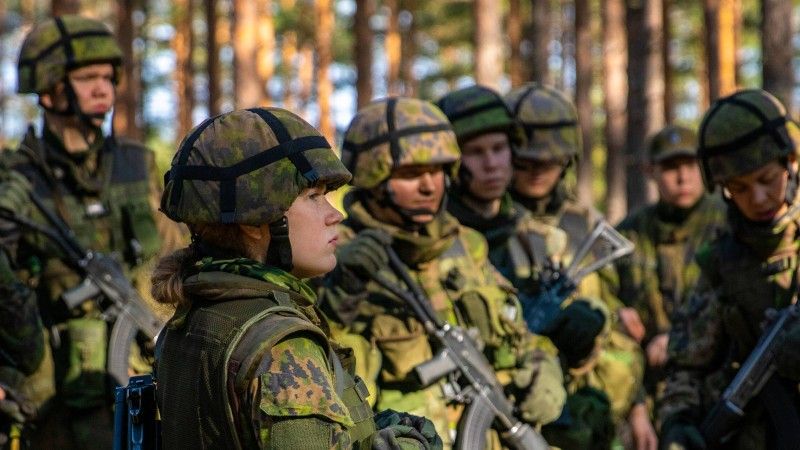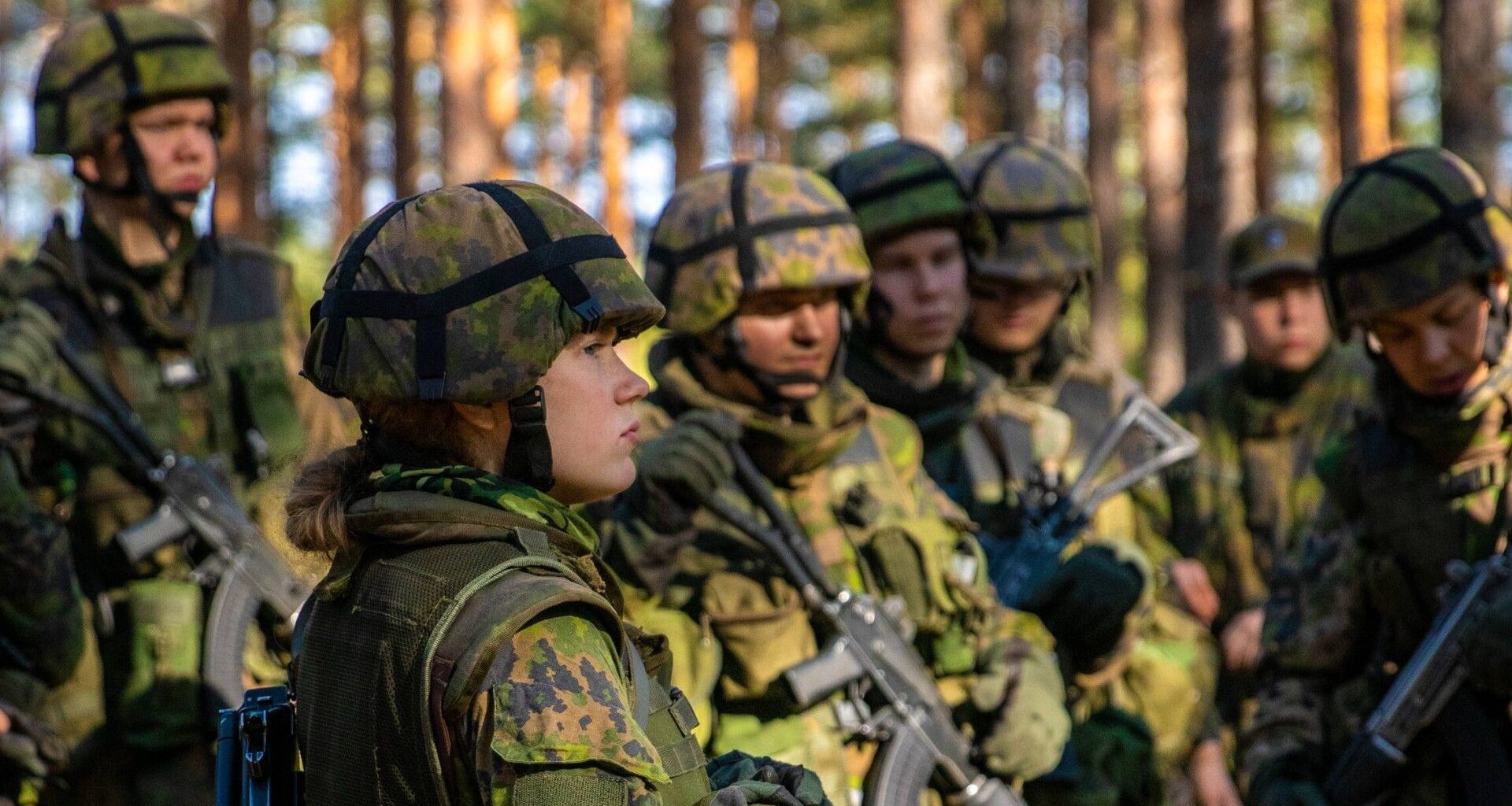
Photo. Puolustusministeriö
Copy link
Send email
A conscript army, training, shelters, but above all, a survival mentality under any conditions. These are just some of the elements of Finland’s comprehensive security system, which for many – especially after 2022 – has become a model to follow.
This nation of over 5.5 million people, sharing a 1,300-kilometre border with Russia, began developing a comprehensive security system back in the Cold War, aimed at ensuring resilience and stability both in times of war and peace. The recent rise in hybrid threats has only reinforced the need for constant adaptation in a world where the word „crisis” can take many forms.
Finland’s comprehensive security system forms the foundation of the state’s resilience to external threats. It is based on the integrated actions of the government, the private sector, NGOs, and the citizens themselves. Its primary objective is to build crisis preparedness by enhancing the country’s resilience during peacetime, crises, and war alike.
Finnish policymakers highlight seven critical state functions that should be protected regardless of the external environment. The comprehensive security system serves this purpose, including, among other things, the mentality of the citizens (sisu), a shelter infrastructure, a conscript military, defence associations promoting military training, and more recently, NATO membership.
Why do Finns feel the need to build a comprehensive security system
The foundation of today’s approach to security lies primarily in 20th-century experiences, especially the Winter War, which for Finns meant both confronting Soviet aggression alone and the necessity of uniting against a common enemy. Another key factor was the Cold War. As a non-aligned country, Finland adopted the doctrine of total defence as a priority, which advocated a holistic approach to enhancing national security.
Paradoxically, the 1990s – when Western European states and the United States were warming relations with the Soviet Union – also proved important in strengthening Finland’s security model. Despite a general trend of reducing military size in Europe, Helsinki chose to maintain universal conscription and a strong reserve force and introduced a legal obligation to include shelters in new buildings.
Lastly, one cannot ignore the impact of Russia’s increasingly aggressive stance toward Ukraine. The events of 2014, and above all those of 2022, only strengthened the need to adapt the security system to growing threats, ultimately becoming a decisive argument for Finland’s accession to NATO.
Sisu – The Finnish Mentality as a Foundation of the Security System
At the heart of Finland’s security system lies a national mentality –sisu – understood as perseverance, willpower, determination, and the refusal to give in under pressure. This attitude plays a significant role because grassroots citizen engagement reinforces a sense of co-ownership in national security.
Sisu is not only a cultural trait but also the result of long-term education and deliberate state policy, ensuring a high level of public services. It is widely known that Finland places great emphasis on defence education – beginning at secondary school, where the younger generation is taught how to prepare for crises. Public awareness campaigns further maintain a readiness for worst-case scenarios.
The Finnish mindset is about building comprehensive preparation and resilience. One example is the „72-hour concept” promoted by authorities and NGOs, which defines the household preparedness level needed for an average citizen to survive for about three days without state assistance – primarily by ensuring adequate food, water, and basic medicine.
What strengthens social preparedness and endurance are the national and regional training courses organised by the Finnish Defence Forces and the National Defence Training Association. These cover a wide range of topics – from self-defence and search-and-rescue operations to handling explosives and leadership skills. The popularity of these programmes is evident: one in six Finnish citizens has undergone military training.
Finland’s strategic resilience system is not only the result of local citizen initiatives but also of well-coordinated crisis management at the national level. The Finnish model relies on close interoperability between public institutions and the private sector, resulting in a real capacity for action under disruption. In the face of hybrid threats, the key to effective response lies in rapid resource coordination – from cybersecurity to crisis logistics.
Shelter Culture – The Foundation of Civil Defence
The shelter-building programme began in 1958. Due to geopolitical conditions at the time – particularly the threat from the nuclear-armed Soviet Union – Helsinki sought to minimise civilian casualties as much as possible.
Today, Finland has over 50,000 shelters, capable of accommodating about 85% of the population. The vast majority – around 75% – are private. This is largely due to legislation requiring any building over 1,200 square metres to have a shelter. Interestingly, during peacetime, these shelters are used as public facilities, such as metro stations, car parks, sports halls, or gyms. Their operational condition depends on being able to accommodate civilians within 72 hours.
Similar shelter-building practices exist in Switzerland, Norway, and Sweden. However, in many EU countries, shelter culture remains underdeveloped. Negative examples include Germany, where shelter infrastructure was neglected after the Cold War, reducing the number from around 2,000 to 580 – now covering less than 0.5% of the population.
Poland also lacks a consistent shelter renovation programme, with existing capacity covering less than 5% of the population. Still, after Russia’s full-scale invasion of Ukraine, Poland began developing the concept of a National Shelter System, aiming to catalogue and expand shelter capacity. Between October 2022 and February 2023, the State Fire Service inventoried 234,735 objects classified as shelters, hideouts, or temporary refuges.
Defence Spending Is Not Everything
Finland has traditionally spent over 2% of its GDP on defence. Following the most recent NATO summit in The Hague, Helsinki adopted the Alliance’s new ambitious goal of raising total defence spending to 5%. However, fulfilling this target is not the whole story – equally important are universal military service, a strong reserve, and a comprehensive training programme, all of which strengthen Finland’s security system.
Despite geopolitical changes, Finland has never abandoned its conscript army. The country maintains compulsory military service focused on territorial defence, lasting from 165 to 347 days. It can be fulfilled with or without weapons, including civil service. It applies to men aged 18–60, though women may volunteer.
Having a conscript army eliminates the divide between society and the military. This is especially important politically, as decision-makers often have first-hand experience of military service.
Finland also boasts a considerable reserve force. Latest figures show a reserve of around 900,000, with 280,000 soldiers ready to be mobilised in the initial phase of conflict. Given the nation’s 5.5 million population, this is an impressive result. Reserve readiness is maintained through frequent training exercises – since 2022, reaching 30,000 annually.
Inspiration for Poland
What Poland should learn from Finland is above all a comprehensive approach to security. While increased defence spending is certainly necessary, both in terms of the military and infrastructure, a shift in mindset and attitude towards national defence is crucial. This means creating a standard of living and a relationship between the state and its citizens that people genuinely want to protect.
When it comes to shaping mentality, Finland shows that social attitudes can be influenced – through defence education from secondary school onwards, and by running public awareness campaigns. Poland could begin by introducing similar initiatives in schools and public media.
Moreover, a military training system for citizens should be developed to reinforce this mentality. Such initiatives should be publicised – on TV, radio, and social media – to boost social preparedness and resilience. Currently, there are only fragmented efforts by the Ministry of Defence. In 2025, it launched the 6th edition of the „Train with the Army” programme, offering voluntary, practical, and free military training. Unfortunately, only 28,000 citizens have participated across five editions – a very low figure that calls for significant change.
From an infrastructure perspective, shelter renovation and expansion would also be a valuable step towards improving civil protection, which is currently underdeveloped in Poland. While some rhetorical changes followed 2022, these only led to limited action by decision-makers. A proposed solution is to enforce shelter-building obligations for all new developments.
Another crucial area is strengthening military-civil cooperation, which in Finland takes place through meetings between military leadership and representatives of civil society, business, public administration, and local authorities. This enhances the comprehensive nature of security efforts. The coordination between various actors in Finland is reflected in the work of the Security Committee under the Ministry of Defence.
This creates conditions of transparency and a sense of responsibility among specific actors for security policy. Poland could follow Helsinki’s example, with the Ministry of Defence responsible for coordination – helping integrate the efforts of local governments, the military, and emergency services.
Finally, although it may sound like a cliché to some, one vital aspect of Finland’s approach is the belief that key security decisions must be based on political consensus, transcending party lines. For Polish policymakers, this should be fundamental.
So far, political action has been selective. While it’s a good start, it is not enough in the long term. What Poland and its citizens need now is a long-term national security strategy, implemented consistently – not as a mere add-on to arms purchases. Without developing civil resilience, systematic citizen training, cooperation between local authorities and the military, and mandatory shelter-building for new developments, we will not create a country capable of effectively defending itself against external threats.
Time for Poland to Act
Building societal resilience should not be limited to the military component – it must also include critical infrastructure protection and dialogue with the public. In Finland, national defence is understood in broader terms – based on the belief that in an age of modern threats, from sabotage to cyberattacks to disinformation, every citizen must be prepared. That’s why civil and military education is integrated with everyday life – from primary school to the workplace.
This model could also be adopted in Poland, integrating the efforts of the Ministry of Defence, the Ministry of Education, and NGOs into a cohesive strategy. The biggest challenge remains political, where vote-chasing often overrides common sense and the long-term thinking Poland urgently needs.
Finland offers valuable solutions, but there’s no need to copy them all. Instead, Poland can gradually implement selected aspects. Since the outbreak of the war in Ukraine, public awareness in Poland has grown around the need to build comprehensive security. As the Finns say: hyvin suunniteltu on puoliksi tehty” – well planned is half done.
Authors: Dr Aleksander Olech, Amelia Wojciechowska
